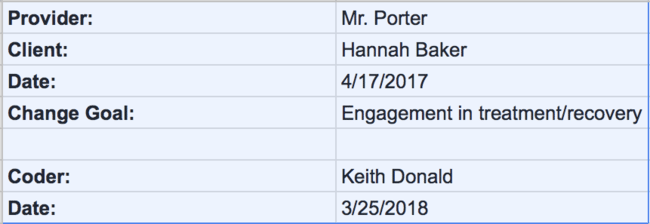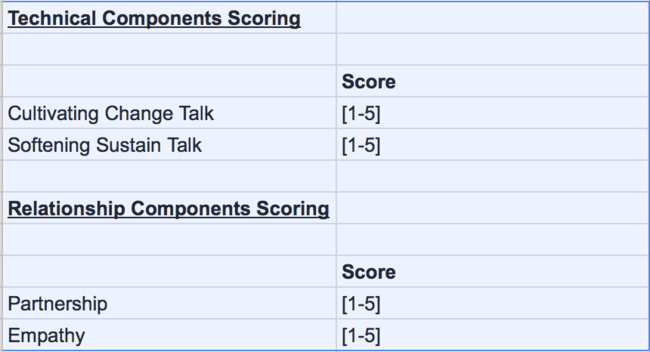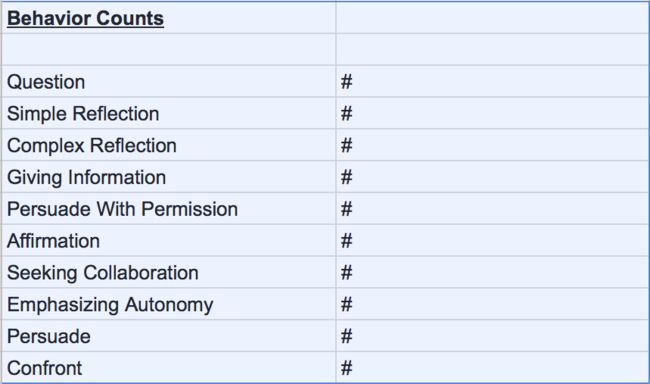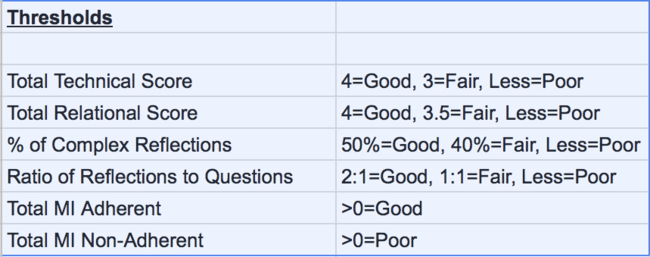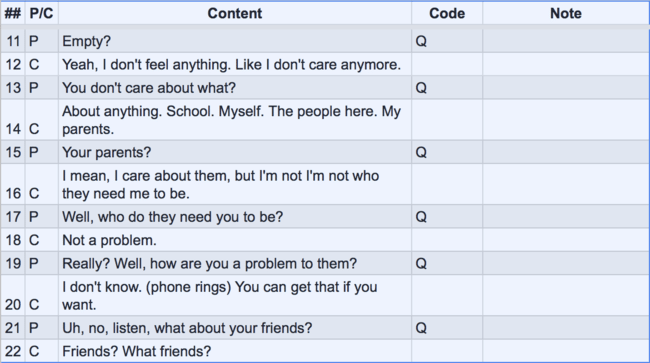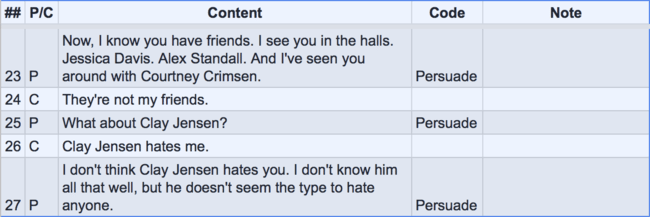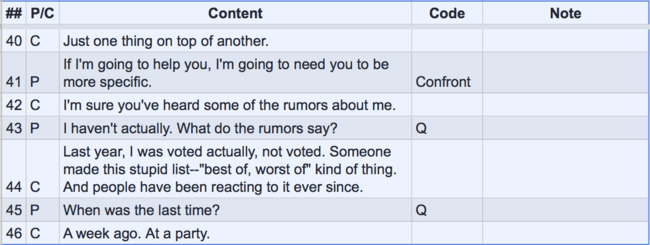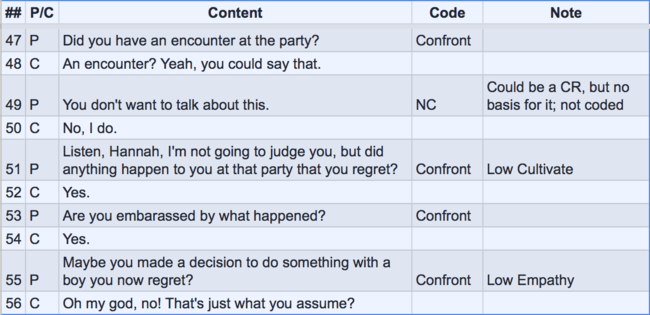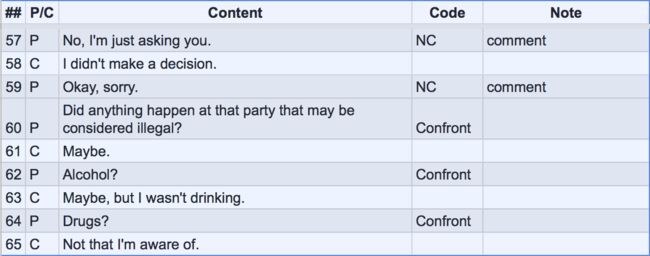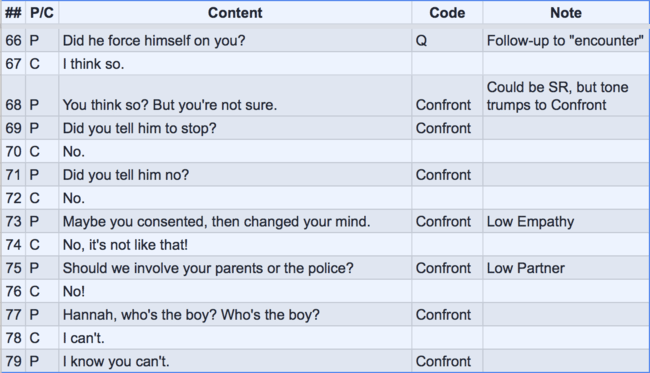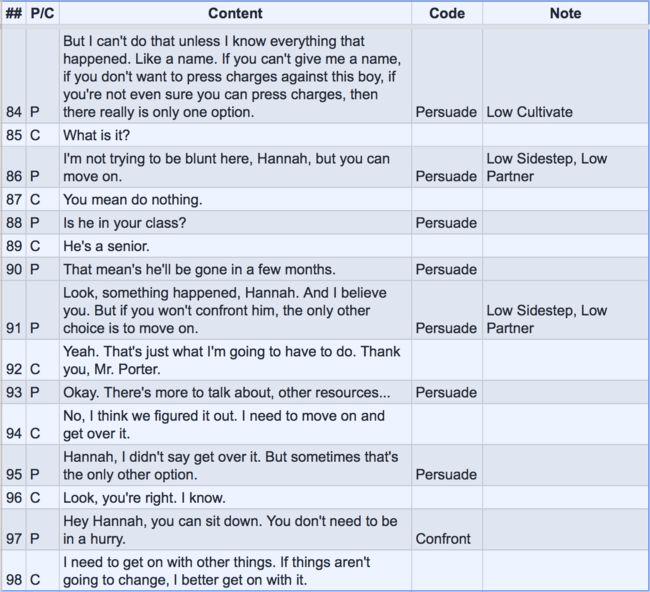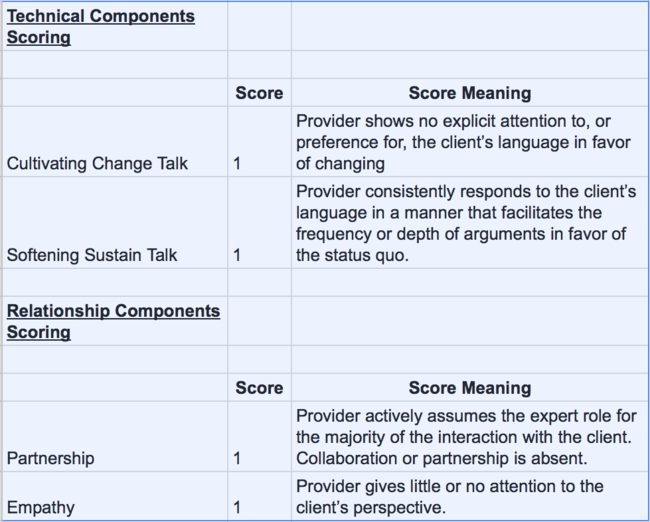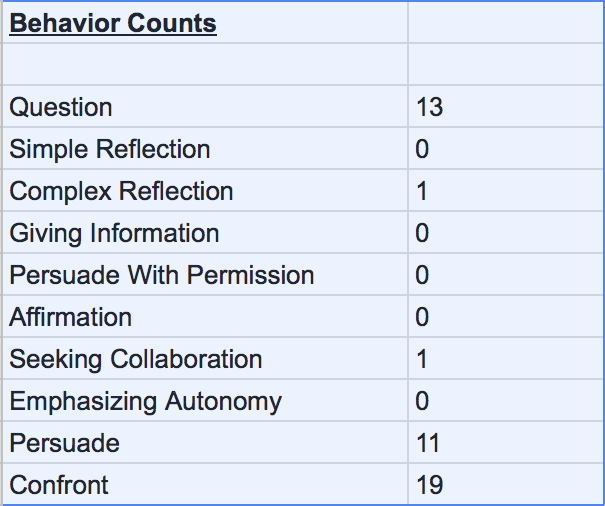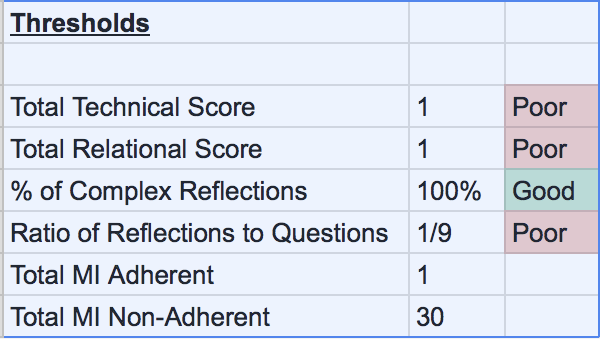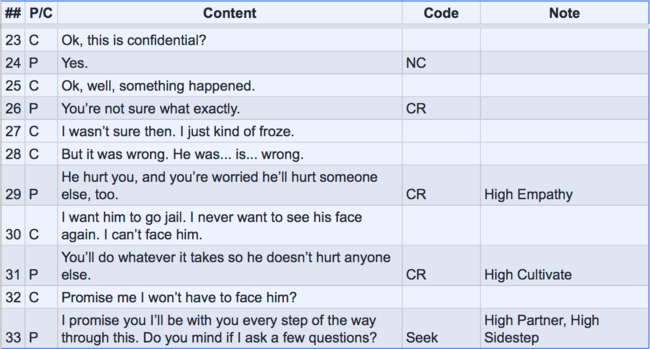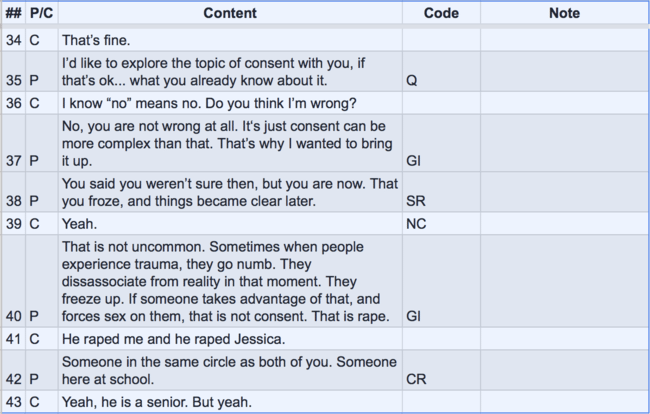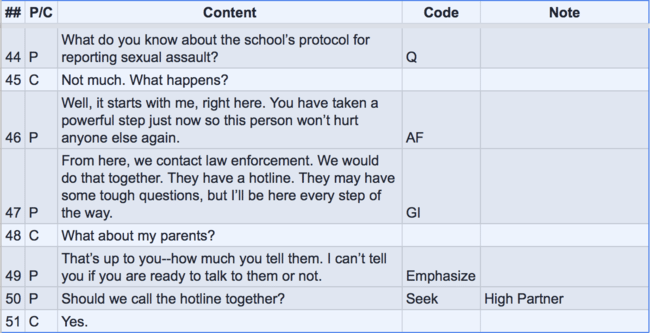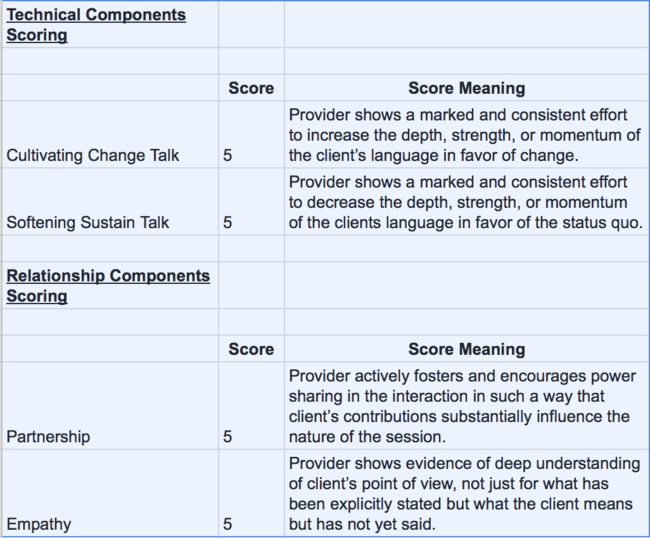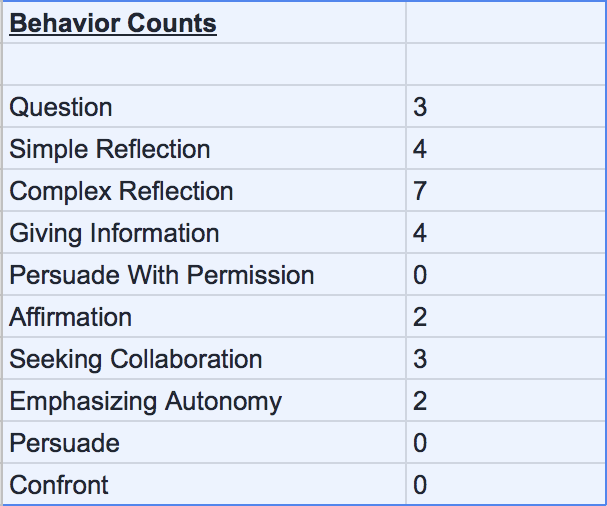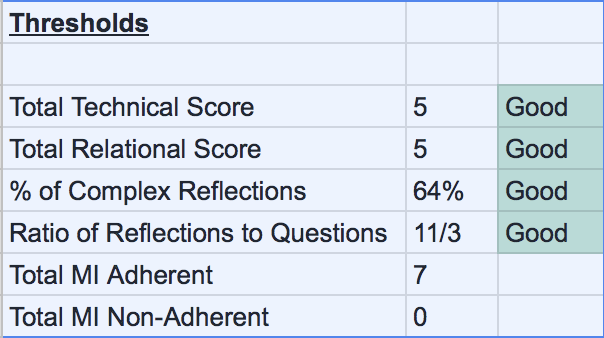The Power of Person-Centered Counseling
For the last five years, my work at Steadytown has been focused primarily on helping the community where I live better address homelessness. This experience has taught me a lot about approaching complex social issues with new ideas, and continues to challenge me today.
The goal of this blog is to share the core ideas and values that have aided progress, with the hope that doing so may help others working on similiar problems. I also expect it will help me continue to learn and innovate.
Good analysts have a natural ability to see where things are now and how they could be different in the future. That’s often the easy part—the hard part is seeing all the steps in between. The best analysts are change leaders—they understand just what step to take next, and just what to say to get the right people on board. This blog aims to explore issues, ideas, and values, but also strategies and context for helping change happen—within systems and individuals.
Helping People Change #
All social support systems help individuals change in some way. Over time, I’ve come to see this — helping people change — as the core idea of social service. And I believe the best service providers are highly skilled in helping their clients change. They are not only experts in desired change goals, but the process by which change occurs.
Unfortunately, in my experience, providers generally pay much more attention to change goals, and much less to change process. The tendency is for a provider to see itself as the expert, and expect that clients will simply follow their advice. When a client fails to do so, it is seen as a deficiency.
Change Process #
For the best providers, adherence to change process is a core value. They are interested in desirable change goals, but they are even more interested in how change occurs. They can’t see achieving one without the other.
I’m often reminded of Nick Saban. As a football coach for the University of Alabama, he cares about winning, but he cares more about the process behind helping each player be the best they can be. It’s that commitment to the process that wins championships year after year.
For those in a helping profession, there are well-researched processes available that support change and build change momentum. Providers have the opportunity to commit to the application of these processes to better serve their clients. I feel strongly it is irresponsible not to do so.
When clients seek help, they are embracing their vulnerability and need to change. They, at least for a moment, are putting their faith in a helper to consider a different way forward. The helper, in choosing how to respond, can either help or hurt. In some fields, such as mental health counseling, hurting may have disastrous consequences.
I was reminded of this over the weekend as I watched Episode 13 of the Netflix series Thirteen Reasons Why. In the episode, the protagonist Hannah, a high school student, reaches out to the school guidance counselor for help. Unfortunately, the counselor does nothing but reinforce the status quo, which takes the show to a very dark place later in the episode. Opportunities to support change are completely missed, and the tragedy that follows is ultimately seen as a deficiency with the client.
In the session with Hannah, it is not clear if Mr. Porter was attempting to apply a specific process or therapy for supporting change. More than likely, he was not, and was simply exercising his position of power over his client in his own way as “expert”. This happens far too often in the helping profession in my experience. Whether intentional or not, it is unacceptable.
Person-Centered Counseling #
A core idea I embrace for supporting change is Person-Centered Counseling. The idea is not new, it was pioneered by the work of Carl Rogers in the 1940’s. But in the last twenty years, it’s become more mainstream and well-researched with the maturity of therapies such as Motivational Interviewing.
I was so impacted by the Netflix series, I began to wonder–what if Mr. Porter had applied a person-centered therapy in supporting Hannah’s motivation to change. Would the outcome have been different?
Yes, I believe so. What follows is a technical exercise to explore that.
Exercise: An Analysis of Fidelity to Person-Centered Counseling #
The exercise consists of two parts. The first part is an analysis of Mr. Porter’s original interview, as conducted in the episode verbatim. The second part is an analysis of a fictional alternative that uses Person-Centered Counseling. The alternative keeps the same structure of the original wherever possible–what’s different is how Mr. Porter responds to Hannah when she reveals motivation to change, or “change talk”.
The analysis tool is called MITI, developed by Dr. Theresa Moyers with the University of New Mexico. The tool measures adherence, or “fidelity”, to Motivational Interviewing, which is a specific person-centered therapy. The theory is that adherent, or high-fidelity, interviews are more likely to favor change, while non-adherent, or low-fidelity, interviews are more likely to favor the status quo.
In order for the tool to be applicable, a change goal should be identified. In this instance, it’s not clear what it is at first, as the context for the visit is fairly general (Mr. Porter doesn’t know why Hannah is coming to see him, but he is happy to see her). But direction does emerge, eventually–it’s to empower Hannah to seek professional help with a sexual assault. The analysis tool will help us assess how well Mr. Porter does strengthening Hannah’s motivation to pursue that change goal.
Let’s get started.
The first thing we note is some basic information about the interview. Mr. Porter, as guidance counselor, is the interviewer, or “Provider”. Hannah is the interviewee, or “Client”.
We also note who conducted the analysis, called the “Coder”. That’s me.
The next section of the analysis is the “global scoring” section. There are four dimensions to score, with each score being a number between 1 and 5. 1 is the lowest possible score, and 5 is the highest. The higher the score, the better job the provider did in that dimension. Each dimension measures a fundamental skill in supporting change.
Here’s a brief overview of the dimensions (for more information, see the MITI manual):
Cultivating Change Talk - measures the extent to which the provider encourages the client’s own language in favor of the change goal. In this interview, when Hannah makes a statement indicating she needs help, how well does Mr. Porter do strengthening that?
Softening Sustain Talk - measures the extent to which the provider avoids a focus on the reasons against changing or for maintaining the status quo. When Hannah makes a statement suggesting help is pointless, how well does Mr. Porter do sidestepping that?
Those two dimensions form the “technical” evaluation, evaluating the technical skills of Motivational Interviewing.
The next two dimensions are “relational” in nature, evaluating foundational skills necessary for Motivational Interviewing. These are more general relationship-building skills:
Partnership - measures the extent to which the provider conveys an understanding that expertise and wisdom about change reside mostly within the client. When Hannah makes a statement regarding her situation, how well does Mr. Porter do respecting that expertise?
Empathy - measures the extent to which the provider understands or makes an effort to grasp the client’s perspective and experience (puts himself in her shoes). When Hannah shares her feelings, how well does Mr. Porter do in showing he understands them?
Following the global scoring, the next set of measures are called “Behavior Counts”. These are simple counts of certain types of statements made by the provider during the interview. For example, one type of statement is a “Question”. If the provider asks the client a question, that count increases by one. The total measures how often that behavior occurred.
Some behaviors are consistent with Motivational Interviewing, others are inconsistent. For example, a “Complex Reflection” that makes a forward-leaning statement that builds on what the client just said and helps continue the conversation is consistent. A statement of confrontation that shames the client is not. In general, the more consistent, the better.
Of these, the first five are foundational behaviors, the next three are “adherent” behaviors (which are the most interesting theoretically), and the last two are “non-adherent” behaviors that go against Person-Centered Counseling.
The foundational behaviors may indicate good practice, often by how the counts relate to one another, but it depends on context. For example, it’s generally regarded as good practice for a provider to make at least two reflections for every question asked during an interview, and complex reflections are generally regarded as more valuable. But how valuable depends on what the provider chooses to reflect (e.g. reflecting sustain talk that goes against change may not be good practice).
The three adherent behaviors clearly indicate good practice. When their counts increase, the provider is doing something right. Of the three, “Emphasizing Autonomy” is the most valuable, followed by “Seeking Collaboration”, and then “Affirmation”.
The two non-adherent behaviors clearly indicate poor practice. When their counts increase, the provider is doing a lot wrong. Of the two, “Confront” is the most dangerous, followed by “Persuade” (trying to persuade the client to change without permission).
Finally, the last section of the analysis looks at thresholds, and assigns either “Good”, “Fair”, or “Poor” values based on meeting threshold.
So, a consistently good provider will have technical and relational scores of 4 or higher, use complex reflections at least 50% of the time, keep a reflection to question ratio of 2 to 1 or more, employ MI-adherent behaviors, and avoid MI non-adherent behaviors.
Original Interview Analysis #
So how did Mr. Porter do in the original interview? Let’s score it and see.
Here’s how the interview starts: (Note that “P” indicates a Provider statement, and “C” indicates a Client statement.)
The first two statements by Mr. Porter are “NC” (not coded) because they are “structuring statements”. A structuring statement sets up the conversation, similar to small talk. Coding begins at statement #4, when Mr. Porter asks Hannah a good open-ended question. Hannah answers, revealing some information.
So Mr. Porter’s job now is to process that information and formulate a response that helps continue the conversation. Let’s see how he does:
Here we see the first sign of trouble. Instead of continuing Hannah’s “everything” revelation, he confronts it, then reframes the conversation. The result is a Confront coding, which increases the non-adherent behavior count by one. If there is any doubt about whether this statement was confrontational, listen to his tone from the episode.
Despite this, Hannah reveals further information. Let’s see where Mr. Porter takes the conversation from here:
Here we see a lot of questions. Mr. Porter is trying to figure out what’s the matter, and Hannah’s not giving him much. It looks like he’s got himself into what could be called a “question and answer trap”. This dialog adds to his Question behavior count by 6. He hasn’t used a reflection yet.
There’s also an argument that all of the questioning is not helping to cultivate change talk, but is reinforcing the status quo by focusing on Hannah’s problems instead of her reasons to change—especially when he probes about her parents.
But it’s still to early to tell. At a minimum, there is little direction established so far and no change talk. Let’s see what’s next:
Here it appears Mr. Porter has heard enough to decide he doesn’t agree with Hannah, so he begins to persuade her without her permission. His intent appears genuine enough, he’s trying to get her to acknowledge she actually does have friends, something he thinks she should value. However, her defensiveness increases. And he gets three Persuade codings, which increases his non-adherent behavior count from 1 to 4.
Still no change talk from Hannah. Onto the next volley:
I singled out statement #28 because I think it’s significant–it contains Hannah’s first glimmer of change talk. She suggests it may matter what Mr. Porter says. She’s still trying to decide which way to go, and has some hope that Mr. Porter will help her with the best path forward.
Does Mr. Porter cultivate Hannah’s change talk? Or does he kill it? Let’s see:
He kills it. So much so that Hannah gets up to leave. This was Mr. Porter’s first opportunity to cultivate change talk, and he missed it completely.
Next, Mr. Porter shows he does care enough about his job to kick it in gear to persuade Hannah to sit back down. He gets a second chance, and fairs better with an open-ended question designed to elicit change talk:
Finally, at statement #33, a reflection. Even if it’s somewhat general, Mr. Porter makes a reasonable guess about the meaning of Hannah’s prior statements, especially about feeling lost and empty. And Hannah responds by revealing some information about what she wants to be different.
Mr. Porter earns a Complex Reflection +1. Maybe he can still salvage this!
Maybe not. He hits her with another interrogating Question, then Confronts her in a way that makes her feel bad about contemplating suicide, if that’s the case. And finally, instead of cultivating Hannah’s change talk – her need to make “something” stop – he does the opposite, by asking her for a history of her problems.
So that’s what he gets:
No change talk or direction here. He’s likely making her feel worse with all this problem elaboration, not better. Meanwhile, what Hannah really meant about wanting everything to stop is left lingering.
With Hannah’s last statement about the party, Mr. Porter decides to go into interrogation mode and take the conversation in a very specific direction:
There is so much ugly here. Hannah’s key statement is #50–it’s change talk. But Mr. Porter kills it as well, confronting her to the point she strongly voices her disapproval. It’s as if he is trying to break her so he can then “save” her as the “expert”–the power imbalance is striking. And his careless remark trivializing what could be a very serious and complex sexual issue earns very low Empathy–#55 is his most damaging statement so far.
Having been met with discord, Mr. Porter must backtrack, and eventually apologizes. Even after putting up with all this, Hannah still reveals some key information in statement #58. Nevertheless, Mr. Porter misses the opportunity and goes back to interrogating:
Here he again places more attention on probing for problems instead of cultivating change talk.
Can it get much worse? In the next dialog, Mr. Porter manhandles the focus of the conversation back to the “encounter”. It is the right topic to focus on, but the approach he takes is confrontational:
After listening to the tone, I gave Mr. Porter the benefit of the doubt on statement #66, coding it a Question instead of a Confront. It’s a follow up to statement #47 that expresses concern, despite being invasive and probing.
But it’s all downhill from there. Everything that follows is confrontational, and Mr. Porter earns low Empathy and Partnership ratings for showing no understanding of her feelings (#73) and threatening to betray her trust (#75).
Mr. Porter sees that Hannah is just not going to give him a name, so he tries a different tact to see if that might help:
Here Mr. Porter tries to give some neutral information about how situations involving a rape are handled. I considered the foundational “Giving Information” (GI) code here, but ultimately selected the non-adherent “Persuade” code for a couple of reasons. First, this information was given without Hannah’s permission and following confrontation, not collaboration. Second, while the information is generally neutral, when you consider the context, Mr. Porter’s use of “she”, “can’t”, and his focus on “who did it” confirm he’s trying to manipulate Hannah into giving him a name.
Let’s see how Hannah responds.
The generally neutral tact works, Hannah has opened up a bit. She’s now thinking about telling, but has some concerns. She also doesn’t correct Mr. Porter, which suggests she may have been raped.
This is good. Mr. Porter earns his first adherent behavior credit, for “Seeking Collaboration” (Partnership). He lets Hannah know he will stand beside her through this.
Statement #82 is fine as well, and was nearly “Emphasizing Autonomy”. But the bar for that code is high, so I left it not coded.
Unfortunately, Mr. Porter, the expert that he is, can’t let a good thing sit:
This ends the interview. Mr. Porter went from saying he’d stand by her in partnership, to persuading her to move on. By advising her to move on, he’s reinforcing the status quo and arguing against change. Given that Hannah is contemplating suicide, this is extremely dangerous. Hannah accepts that change is not possible and leaves.
When I watched the episode, it was difficult. Going through it just now was difficult. We know what happens next.
Mr. Porter played a part. When he had the opportunity in her moment of vulnerability, he abused his power. He hurt Hannah. He did not help her.
It is unacceptable, and it happens far too often.
Let’s now take a look at the full report, starting with the global scores:
After watching the epsiode twice, and listening as objectively as possible for fidelity to Motivational Interviewing skills and spirit, I assigned Mr. Porter the lowest possible score across all four dimensions.
The meaning of each score value is noted above (also in the MITI manual). Contributing justifications are highlighted as notes in the coded transcript.
Next are the Behavior Counts:
Out of 53 statements total, Mr. Porter confronted Hannah 19 times, questioned her 13 times, and persuaded her 11 times. He used 1 complex reflection, and sought collaboration once. 8 statements were not coded.
And finally, the Thresholds:
Mr. Porter scored poorly technically and relationally. His reflection ratio was also poor (1 reflection to 9 questions asked). His total non-adherent behavior count was 30, compared to an adherent count of 1.
This concludes my analysis of Mr. Porter’s original interview. The full report is available here as a Google Sheet.
Person-Centered Interview Analysis #
Now, onto a person-centered counseling alternative. How will it compare?
The alternate version aims to keep the same structure as the original while adhering to Person-Centered Counseling. It will weave in many of Hannah’s same statements–what will be different is Mr. Porter’s focus on the four dimensions: Cultivating Change Talk, Softening Sustain Talk, Partnership, and Empathy. In addition, he will pay attention to his behaviors, and look for strategic opportunities to employ adherent behaviors in pursuit of the change goal.
Recall, the change goal is to empower Hannah to seek professional help with a sexual assault. Mr. Porter failed in the original interview. Let’s see how he does in this one.
Here we go:
The interview begins the same way. Mr. Porter does some structuring, asks a good opening question, and Hannah responds with “everything”.
Let’s consider what may happen next. In the original interview, Mr. Porter confronted Hannah about her “everything” comment–suggesting it was overly dramatic, then reframed the conversation. We know that the adherent Mr. Porter won’t do that–he will avoid all non-adherent behaviors. So let’s see what he says:
Mr. Porter reflects what Hannah says in a slightly different way–by making an informed guess that her “everything” comment means she has a lot to talk about. He then seeks Hannah’s collaboration on where to start the conversation. She responds with the same elaboration she gave before, but elaborates two statements sooner.
Where to next? The original Mr. Porter went from here into a line of questioning. Here’s where the new Mr. Porter goes:
No questions here. Mr. Porter simply reflects the last thing Hannah said, “Empty”, and she elaborates herself about what she meant.
Statement #11 is significant. Mr. Porter astutely keys in on Hannah’s last word–“anymore”, and makes a complex reflection that keeps the conversation going while offering empathy and deeper meaning.
Gone is all the invasive probing trying to rat out the issue, and the backtracking when he goes down a rabbit hole and she gets defensive. Instead, Mr. Porter is guiding the conversation along in the direction Hannah chose, trusting that Hannah will reveal the issue herself soon enough.
She continues:
Hannah has just revealed as much in 16 statements as she did in 37 statements in the original interview. Statement #13 is Mr. Porter’s most interesting. Again, he makes an informed guess that helps continue the conversation—confirming that Hannah is dealing with something serious, something that needs to be taken seriously.
With statement #16, we are to the critical “Life” comment. Remember how Mr. Porter responded before? He confronted Hannah, made her feel bad about saying it. She apologized, and he shifted gears.
Hannah just said she needs “Life” to stop. And this Mr. Porter understands it’s serious. Let’s see how he responds instead:
The adherent Mr. Porter synthesizes everything Hannah has said up to this point, then summarizes it in a way that shows he understands how she feels. Hannah responds “Yes” with emphasis, confirming he hit the nail on the head. And he then takes this moment to make a genuine affirmation.
We can now see a direction ahead for the conversation–to help Hannah through a serious turning point in her life. We don’t know the details yet, but we’re well positioned for those to come.
How does Hannah respond to the affirmation? Recall, my goal is to stay true to the original interview context. Hannah came in more closed off than anything else, and she’s not going to open up easily. So her response is similar to a statement she made in the original interview:
She’s tough! And remember how the original Mr. Porter responded? He said he didn’t follow, and Hannah nearly walked out.
So let’s see what the adherent Mr. Porter says:
He validates her feelings by giving some neutral information, which also sidesteps her sustain talk, then empowers her to tell her story.
I believe that #22 is Mr. Porter’s most impactful statement so far–it’s high in Cultivating Change Talk, Partnership, and Empathy, all in one.
And from here, little by little, Hannah begins the process of telling her story:
Mr. Porter listens curiously–his guess at statement #26 is off, but Hannah corrects him, and he allows her to elaborate. Following statement #28, Mr. Porter understands Hannah may be the victim of sexual assault.
So he collects his thoughts and makes a highly empathetic statement at #29. From there, direction around the target change goal really starts to emerge. By statement #33, Mr. Porter is already focused on guiding Hannah to seek professional help. He closes this section of dialog by asking for permission to get the information needed to move forward together.
I think statements #31 and #33 are particularly interesting from a Softening Sustain Talk perspective. Hannah is concerned about facing her abuser, but Mr. Porter knows that’s out of his control. He doesn’t ignore her, but chooses to highlight her change talk instead, side stepping her fear of confrontation. This strategy is intentional, and together with his emphasis on collaborative partnership, is more likely to maintain forward change momentum.
So let’s see how Mr. Porter handles gathering key information:
Mr. Porter is seeking to confirm that an assault happened and the extent of it, if possible. His strategy is very different than the original interview.
In the original interview, Mr. Porter badgered Hannah with confrontational questions, then threatened that she’d just have to move on if she didn’t give him a name. Here, Mr. Porter starts by asking Hannah what she already knows about consent, then fills in an important gap, then summarizes what he has understood so far, and then validates it.
The result? Hannah’s most powerful statement, #41. Mr. Porter now knows not only was there an assault, two rapes may have occured and the school may have a sexual predator among its senior class.
Mr. Porter’s use of the strong word “rape” as the last thing he says in statement #40 is intentional. He gives a lot of information there, and knows Hannah is most likely to respond to the last thing he says. He knows if she was raped, she may follow up by confirming so, and she does.
Notice also Mr. Porter has not seen the need to ask for a name. That will come out in time–when Hannah is ready to disclose it. In the original interview, Mr. Porter was preoccupied with the name, and all that did was put Hannah on the defensive. This Mr. Porter knows the last thing Hannah wants to do is say the name of her predator. He is much more careful in allowing her to share what she is comfortable sharing.
At this point, Mr. Porter has enough information to help Hannah call the police. And he senses there is enough forward momentum to get right to it. Here’s how he closes out the interview:
Again, he asks Hannah what she already knows about a topic, instead of just telling her. This supports collaboration and saves time.
Statement #46 is very interesting–Mr. Porter affirms the power behind Hannah’s revelation. This is a genuine affirmation of strength designed to further empower action.
Statement #49 is also very interesting–Mr. Porter emphasizes it is up to Hannah to decide when and if she tells her parents, further empowering her. In the original interview, he threatened to rat her out to her parents. Here, he does exactly the opposite.
This concludes the alternate person-centered interview. I can imagine a very different ending. Can you?
Imagine Hannah’s redemption! That is the power of Person-Centered Counseling.
Let’s now take a look at the full analysis report, starting with the global scores:
After watching an actors’ reenactment of the full interview two times, and listening as objectively as possible for fidelity to Motivational Interviewing skills and spirit, I assigned Mr. Porter the highest possible score across all four dimensions. As before, contributing justifications are highlighted as notes in the coded transcript.
Full disclosure: I wrote this interview over a two hour period aiming for it to be highly adherent to Person-Centered Counseling while remaining consistent with the original interview context. This obviously isn’t like the real world, where a provider has much less time to process client statements and formulate adherent responses. In reality, mastery and consistent application of Person-Centered Counseling takes a lot of practice and experience. I believe it falls into the 10,000 hours category.
Now, back to the report. Next are the Behavior Counts:
Out of 28 statements total, Mr. Porter sought collaboration with Hannah 3 times, emphasized her autonomy 2 times, and affirmed her strengths 2 times. He used 7 complex reflections, 4 simple reflections, gave neutral information 4 times, and asked 3 questions. 3 statements were not coded.
Interestingly, Mr. Porter only had to speak 28 times to get much further with Hannah. In the original interview, he spoke 57 times, twice as much, and she still walked out.
One criticism of Person-Centered Counseling I’ve heard before is “it takes too long”. It usually goes like this–“You sound so nice, it’s going to take you forever to get anywhere with your client—where’s the tough love?”. Or, “you’re just babying your client”. I’ve found this claim generally associated with a lack of understanding of the therapy. Highly-skilled providers know just what to say to move a conversation about change forward, which saves time, as this exercise has shown. They also know when to be assertive, evocative, and vary their voice inflection.
What I’ve found to be accurate is that mastering Person-Centered Counseling takes disciplined commitment and deliberate practice.
Finally, the Thresholds:
Mr. Porter was excellent technically and relationally. His reflection ratio was also very good (11 reflections to 3 questions asked), and he favored complex reflections 64% of the time, also good. His total adherent behavior count was 7, compared to an non-adherent count of 0–fully adherent.
This concludes my analysis of Mr. Porter’s person-centered interview. The full report is also available as a Google Sheet. This also completes the exercise.
Conclusion #
In conclusion, I’m excited about this blog as a medium to share ideas for helping systems and individuals change.
This article explored that, in order to help people change, it’s not enough to know the desired change goal—you must also understand the process by which change is likely to occur. Person-Centered Counseling provides a set of well-researched processes and tools for supporting change and building change momentum.
The exercise showed that providers that commit to the mastery of Person-Centered Counseling for their social service applications may outperform those who do not. By remaining adherent to proven change processes, providers may better support their clients in achieving desirable change goals. This can be very powerful, as Hannah’s redemption showed.
The exercise also showed that providers that remain less committed or otherwise non-adherent may be operating under a higher level of risk of hurting clients, which, for certain applications such as mental health counseling, may contribute to disastrous outcomes. This can be very dangerous, as Thirteen Reasons Why shows.
The person-centered Mr. Porter brought out the best in Hannah. Would you?
–KD
